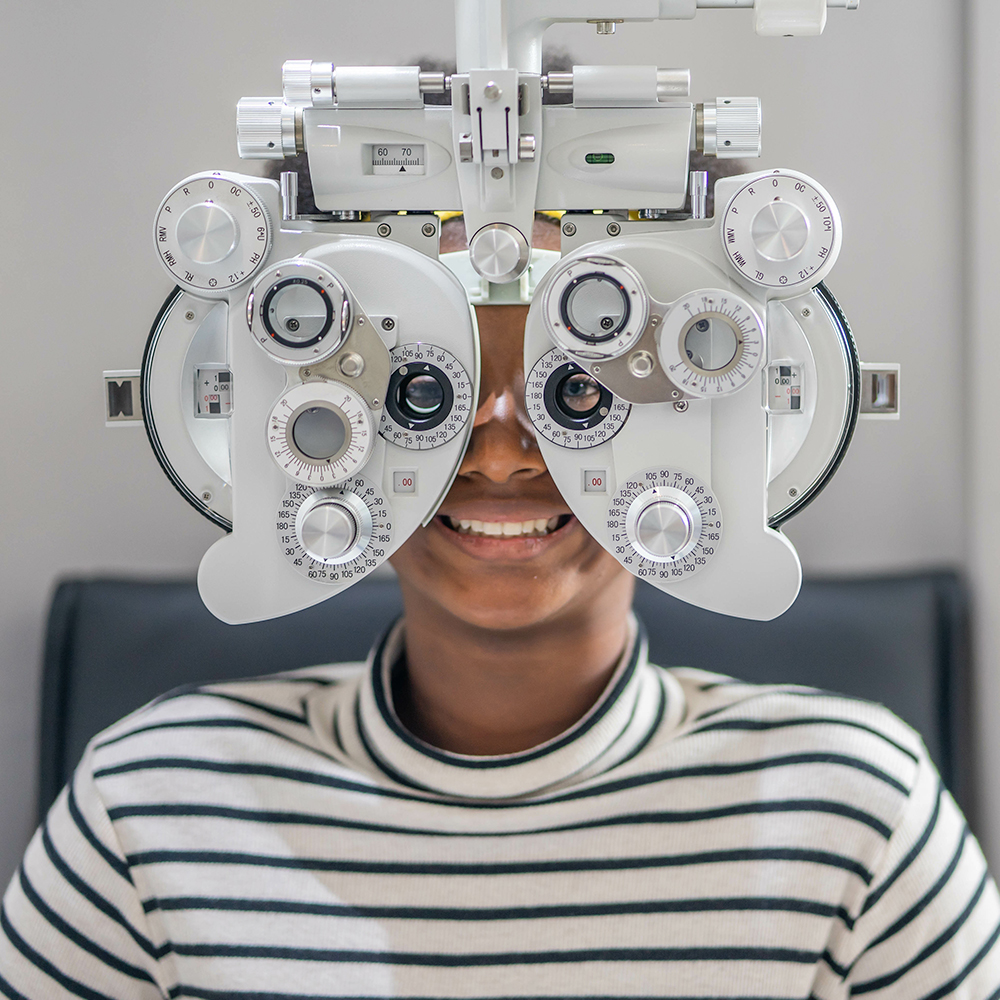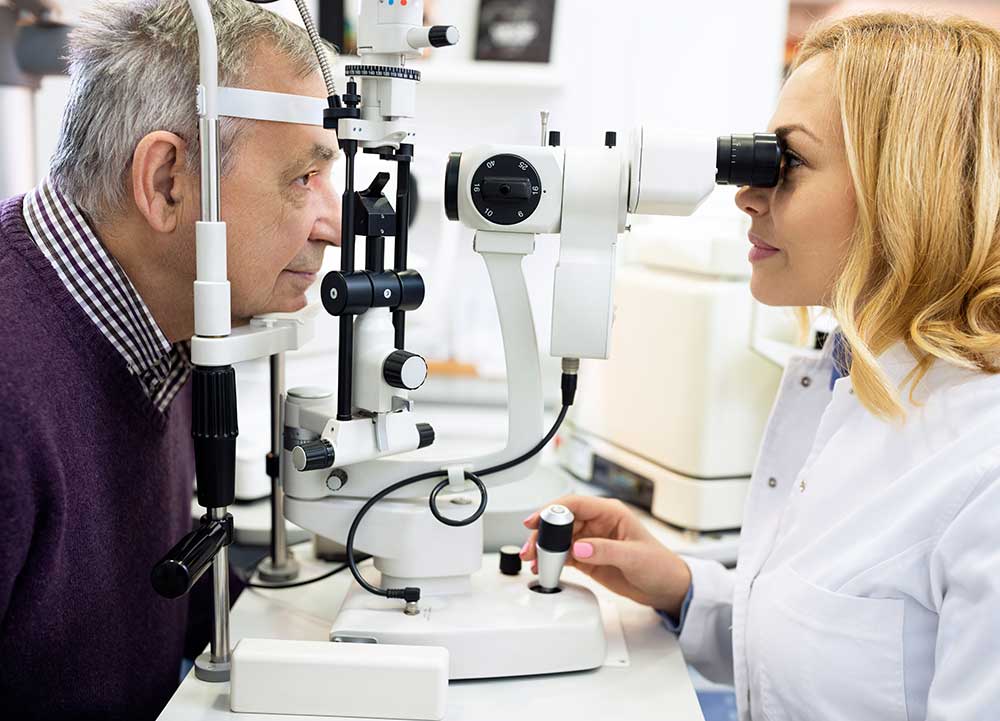Exploring the most recent Technological Innovations in Optometry and What They Mean for Optometrists
In the ever-evolving field of optometry, recent technical innovations are reshaping just how specialists come close to eye care. From the accuracy of Optical Comprehensibility Tomography to the nuanced insights used by AI-driven analysis tools, these innovations are establishing new criteria in client analysis and treatment. Teleoptometry is positioned to redefine access, ensuring that know-how goes beyond geographical restrictions. As these developments permeate the technique, eye doctors are faced with the challenge of accepting these tools to boost client outcomes. Yet, the inquiry continues to be: exactly how will these technical shifts redefine the roles and duties within the profession?
Advancements in Diagnostic Tools
Advancing the field of optometry, developments in analysis devices have reinvented the method eye treatment professionals assess and diagnose visual problems and eye problems. The past years has actually experienced substantial technical advancements, allowing even more precise and thorough analyses.
One more secret innovation is the intro of innovative corneal topography systems, which map the surface curvature of the cornea with precision. These tools are particularly helpful for suitable call lenses and detecting corneal conditions. Electronic retinal imaging has changed typical ophthalmoscopy, supplying detailed, breathtaking sights of the retina that facilitate comprehensive aesthetic assessments.
The development of wavefront aberrometry has actually additionally been essential, allowing the evaluation of refractive mistakes with unequaled accuracy (Eye Doctor Optometrist). This technology helps in customizing rehabilitative lenses and enhancing surgical results for refractive surgical procedures. Collectively, these diagnostic improvements equip optometrists to provide remarkable individual treatment, ensuring early intervention and customized therapy approaches, eventually boosting visual health end results
AI in Person Administration
Building on the structure of cutting-edge analysis tools, the incorporation of artificial knowledge (AI) in person monitoring represents a transformative leap for optometry. AI systems are increasingly used to enhance performance, precision, and personalization in individual care.
Additionally, AI-driven platforms help with structured individual communications and administrative processes. Automated scheduling, virtual assessments, and individualized follow-up plans not only boost patient complete satisfaction yet additionally optimize time monitoring for professionals. These systems can triage patients based on the necessity of their problems, making sure that those in crucial need obtain punctual focus.
Furthermore, AI boosts decision-making by giving optometrists with evidence-based suggestions and treatment paths. By integrating information from digital health documents, AI tools provide insights that notify medical decisions, lowering the danger of mistakes and enhancing individual outcomes. As AI remains to advance, its role in person monitoring will likely expand, improving the landscape of optometric treatment.
Advancements in Retinal Imaging
In the realm of optometry, retinal imaging has actually observed amazing technical advancements that are enhancing diagnostic abilities and client care. Technologies such as Optical Comprehensibility Tomography (OCT) and fundus photography have actually transformed how eye doctors picture and assess the retina.
Enhanced imaging modalities like OCT angiography are additional refining diagnostic accuracy. This non-invasive strategy maps blood flow in the retina, using essential understandings right into vascular health and wellness without the demand for dye shots. In addition, flexible optics technology is being incorporated into retinal imaging systems to fix ocular aberrations, providing unprecedented image clarity. Such improvements help with the identification of min retinal changes that could represent disease development.
In addition, innovations in expert system are enhancing retinal imaging by enabling automated evaluation of big datasets. These systems aid eye doctors in identifying patterns a measure of pathology, consequently boosting analysis accuracy and efficiency. Jointly, these innovations are transforming retinal imaging right into a cornerstone of contemporary eye treatment, enhancing results and broadening therapeutic possibilities.
Teleoptometry's Growing Role
Teleoptometry is increasingly becoming a vital element of eye treatment, driven by improvements in digital interaction and analysis tools. As optometry embraces digital improvement, teleoptometry promotes remote assessments, enabling eye doctors to extend their solutions past standard limits. This is particularly beneficial in underserved and country areas where access to specialized eye care is commonly minimal. By leveraging high-resolution video clip conferencing and progressed retinal imaging, optometrists can perform extensive eye exams from afar, making certain prompt medical diagnosis and treatment.
The assimilation of synthetic intelligence (AI) more enhances teleoptometry, allowing the analysis of visual data and helping in the discovery of ocular problems such as glaucoma and diabetic retinopathy. AI-powered algorithms can swiftly interpret complicated imaging data, giving optometrists with useful understandings that strengthen medical decision-making.
In addition, teleoptometry supports continuity of care through smooth combination with digital health records (EHRs), permitting optometrists to maintain detailed individual histories. This makes sure that clients obtain personalized and regular care even navigate to these guys when speaking with different specialists.
Regardless of these advantages, challenges stay, consisting of ensuring information security and taking care of person assumptions. Teleoptometry represents a substantial stride in the direction of more easily accessible, reliable, and patient-centered eye care. As technology evolves, its role is poised to increase better.

Future Patterns in Eye Care
A myriad of ingenious patterns is readied to reshape the future of eye care, driven by technical improvements and the progressing needs of patients. One significant trend is the assimilation of fabricated intelligence (AI) in diagnostics, which guarantees to boost the precision and performance of eye examinations. AI algorithms can evaluate huge amounts of information from retinal images, possibly finding conditions like diabetic retinopathy and glaucoma earlier than typical methods.
In addition, individualized medication is getting traction in optometry, with genetic testing notifying tailored treatment plans. This technique aims to maximize person outcomes by tailoring interventions to private hereditary profiles. Wearable innovation, such as smart call lenses, is likewise coming up, offering real-time tracking of intraocular stress or glucose degrees, therefore offering continual understandings into eye and systemic health.
The fostering of augmented fact (AR) and virtual truth (VIRTUAL REALITY) in training and individual education is another emerging fad. These innovations use immersive experiences that can boost understanding and click reference abilities both for optometrists and individuals. As these trends advance, eye doctors need to stay abreast of technological innovations to offer sophisticated care, making sure better patient end results and satisfaction in the dynamic landscape of eye care.
Conclusion

Collectively, these analysis developments empower eye doctors to provide remarkable person care, making sure early intervention and tailored treatment techniques, eventually enhancing visual health and wellness results.

As these technologies continue to progress, eye doctors have to adjust and incorporate them into practice, eventually maximizing workflow efficiency and raising the criterion of click here for more eye treatment delivered to individuals.